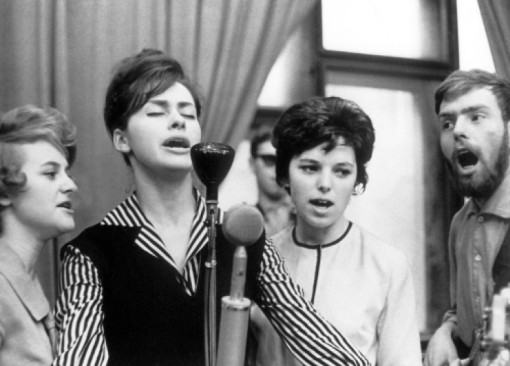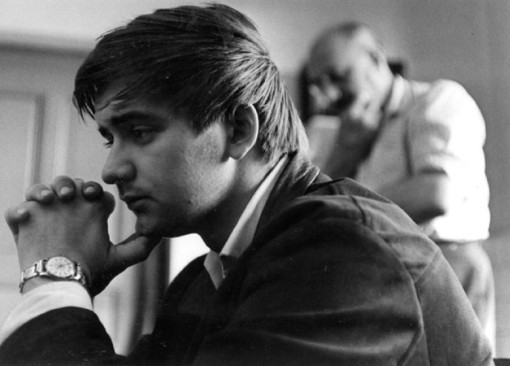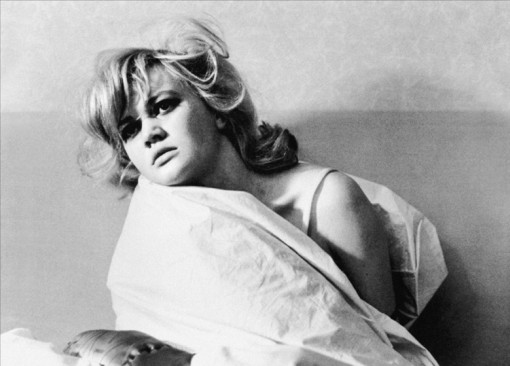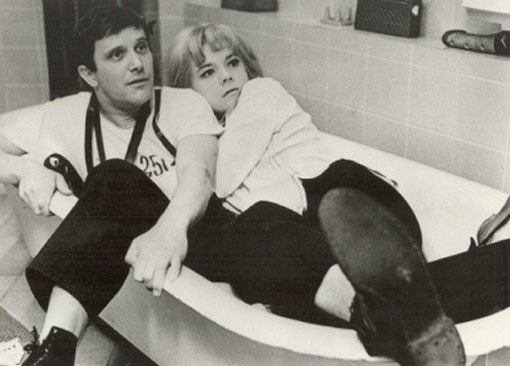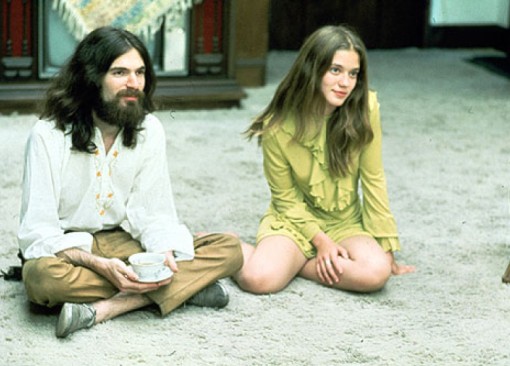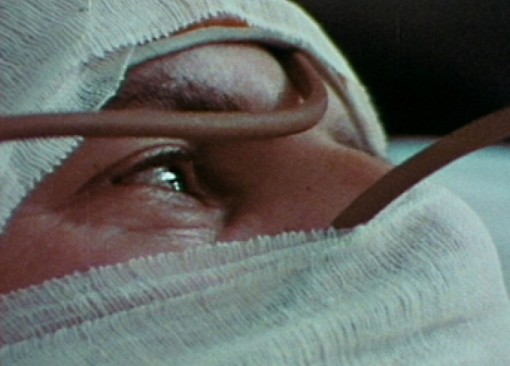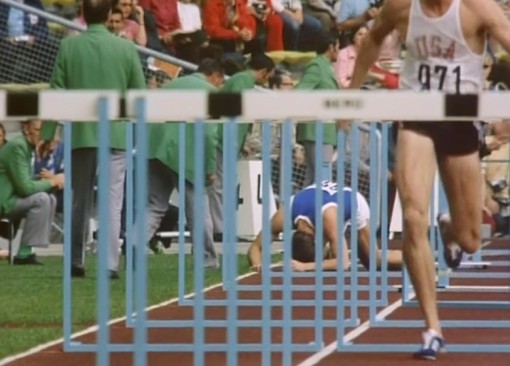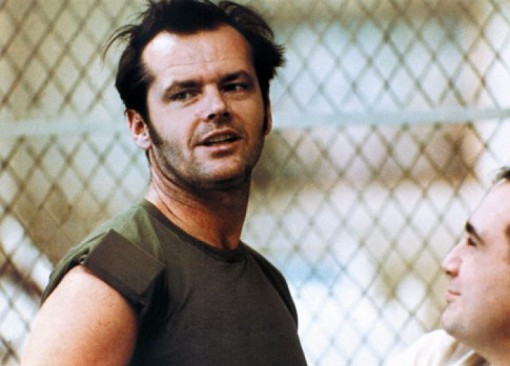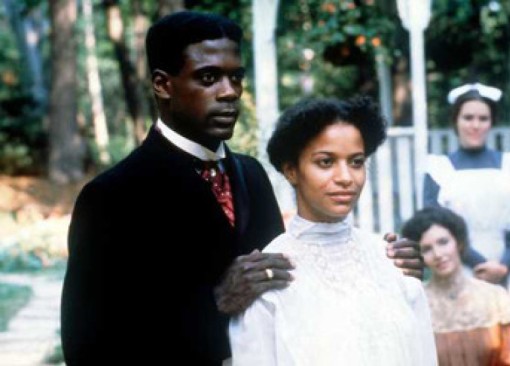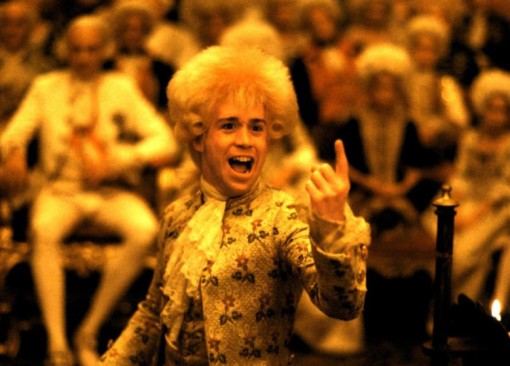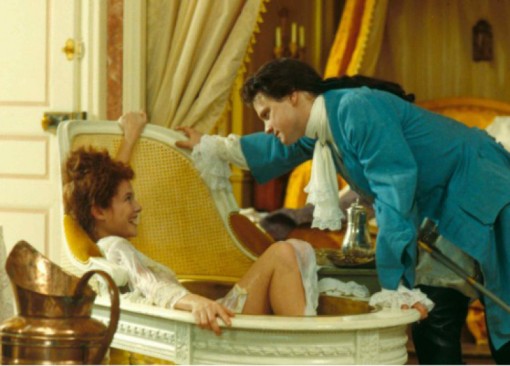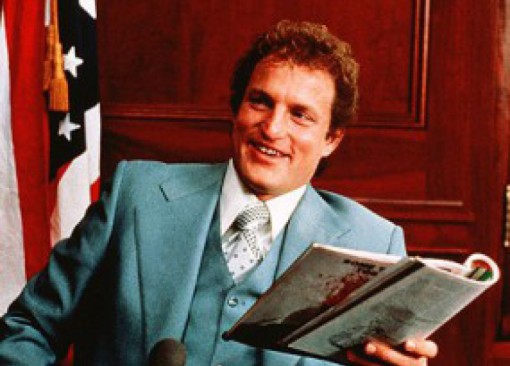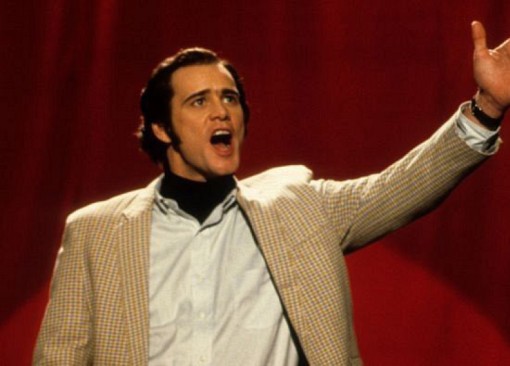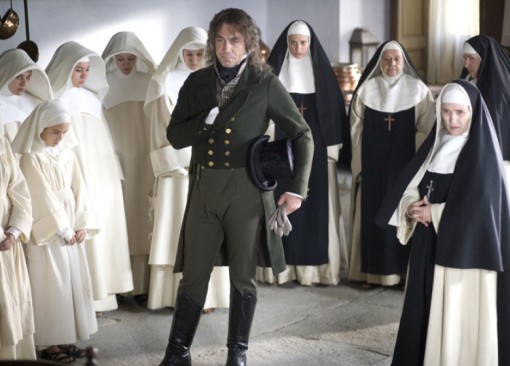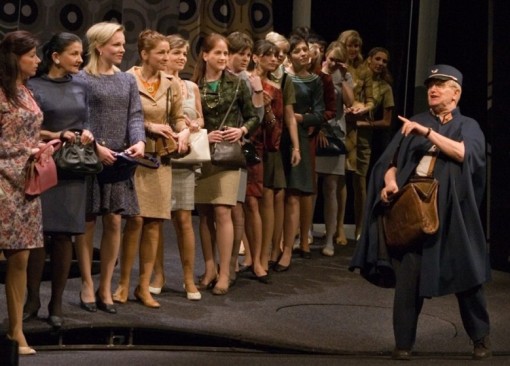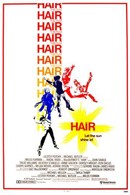“Although “Hair” appears to have been carefully conceived, the total effect is spontaneous. Like the best movie musicals of the '50s (“Singin' in the Rain”) and the '60s (“A Hard Day's Night”), “Hair” leaps from one number to the next. Soon the audience is leaping too.”
Claude, a farm boy from Oklahoma “believes in God, and believes that God believes in Claude.” Claude travels to New York as a patriot to join the Vietnam War. However, in Central Park he meets a group of hippies. Claude discovers freedom, drugs and his first love Sheila. He gradually stops believing in everything he used to consider “right.” This film is an anti-war parable full of hippie tenderness, psychedelic fantasies, and outstanding music. “Hair”was written in the decade after the 1960s, when the revolutionary spirit of that time had become a nostalgic memory.
About the movie
Why should a twenty-year-old boy go to the other end of the world to die? -- Especially if he hasn’t had a girl yet. All he needs to be happy is a bit of love, marijuana and a group of faithful friends who can stand up for him - or if necessary, sacrifice themselves for him.
The film “Hair” tells the story of a naive boy from the American Midwest named Claude Hooper Bukowski who has been shaped by his family’s patriotism. Under the influence of a group of hippies led by the charming George Berger, Claude starts to doubt his motivation for joining the Vietnam War.
The film is based on the Broadway musical of the same name and reflects the American socio-political conflict of the decade, specifically the resistance to the Vietnam War (1964-1975). Forman used this historical background to communicate a more personal topic: the conflict between an individual and society that claims adjusting and obedience. At the same time, the movie is a satirical interpretation of a prudish American family and conservative society.
“Hair” is now considered to be a cult hippie classic, however the film was shot at the end of the 1970s, at a time when the social resonance of hippie ideals had lost its currency.
Perhaps none of Forman’s films were as initially underestimated as “Hair”. Before Forman and Twyla Tharp made the film, they had had no previous experience with musicals. However, Forman and Tharp demonstrated their cultivated sense of energy and the right rhythm of musical and dance performances, and together created one of the most interesting musical movies of the time.
When “Hair” screened in Forman’s native (and those days communist) Czechoslovakia, people queued all night to get tickets. For that generation of Czechs the movie became a manifesto of longed-for freedom. However, the reason behind its popularity wasn’t a criticism of the United States, as the communist regime (mistakenly) believed.
Trivia
- The musical “Hair”debuted on Broadway on 29th April 1968 at the Biltmore Theatre. In 1969 it was nominated for a Tony Award, The world premiere of musical “Hair” was actually a few months earlier on 17th October 1967 at the Public Theatre in the East Village and was produced by Joseph Papp.
- The movie diverges from the plot of the older theatrical play. In the theatrical play, Claude is already a member of the hippies and eventually goes to Vietnam. In the film, Claude’s character is rewritten as an innocent draftee from Oklahoma who has recently arrived in New York City to join the military whe he meets hippies for the first time. In the musical, Sheila is an outspoken feminist leader of The Tribe who loves both Berger and Claude. A major plot change in the film involves Berger’s fate.
- The film omits several famous songs from the musical including “The Bed“, “Dead End“, “Oh Great God of Power“, “I Believe in Love“, “Going Down“, “Air“, “My Conviction“, “Abie Baby“, “Frank Mills“, and “What a Piece of Work is Man“.
- Some of the songs were shortened (“Manchester England”), slightly changed (“Walking in Space”) or assigned to different characters. The song “Somebody to Love“ was original to the movie.
- George Lucas was originally offered to the movie to direct, but he declined as he was in the middle of filming “American Graffiti“.
- One of the original authors of the musical Gerome Ragni wanted to play Berger. In the end, actor Treat Williams was cast due to his age.
- Madonna and Bruce Springsteen auditioned for parts in the film.
- The movie was shown out of competition at the 1979 Cannes Film Festival.
Milos Forman about the movie
- “I had lived so long under Communism, that for me anybody who fought against Communism was a hero. America was a hero for fighting the Communists in Vietnam. But “Hair” the musical was an act of freedom for me as well. Freedom trumped everything. I was amazed at how free this country was, that it could look at itself in the mirror and see its own dark side.”
- “As I was a bit lazy, I occasionally invited the applicants to my place. Once a sinewy young man showed up at my door. He had a guitar with him.”
“I’m here for some audition,” he said.
“Do you know the musical “Hair”?” I asked him.
“Yeah,” he replied.
“Do you like it?”
“No.”
“So why did you come to see me?”
“My agent sent me,” said the young boy and shrugged his shoulders.
“So since you are here, would you like to play something for me?”
“No.”“So we said goodbye. His name was Bruce Springsteen.”
Soundtrack
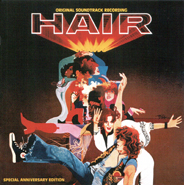
Hair: Original Soundtrack Recording
| Music: | Galt Mac Dermont |
| Lyrics: | Gerome Ragni and James Rado |
| Recorded and mastered by: | Galt Mac Dermont |
| © 1979 RCA Records (2 LP) © 1989 RCA Records (2 CD) |
|
LP / CD 1
-
Aquarius 04:48 -
Sodomy 01:30 -
Donna / Hashish 04:21 -
Colored Spade 01:34 -
Manchester 01:58 -
Abie Baby/Fourscore 02:45 -
I'm Black/Ain't Got No 02:25 -
Air 01:27 -
Party Music
(Not included in 1989 CD)03:27 -
My Conviction
(Not included in 1989 CD)01:47 -
I Got Life 02:17 -
Frank Mills 02:41 -
Hair 02:44 -
L.B.J. 01:09 -
Electric Blues / Old Fashioned Melody 03:51 -
Hare Krishna 03:21
LP / CD 2
-
Where Do I Go? 02:49 -
Black Boys 01:13 -
White Boys 02:37 -
Walking In Space 06:14 -
Easy To Be Hard 03:41 -
3-5-0-0 03:50 -
Good Morning Sunshine 02:26 -
What A Piece Of Work Is Man 01:40 -
Somebody To Love 04:12 -
Don't Put It Down 02:26 -
The Flesh Failures / Let The Sunshine In 06:04
Reviews
English
Spiritualityandpractice.com (Frederic and Mary Ann Brussat)
Time Out Magazine
Variety
New York Times (Vincent Canby)
DVDtown.com (John J. Puccio)
IMDB.com (Dragan Antulov)
TVguide.com
Time Magzine (Frank Rich)
Empireonline.com (David Parkinskon)
ChicagoReader.com (Dave Kehr)
Czech
Odaha.com (Tomáš Odaha)
i-kultura.cz (Lucie Steinocherová)
French
Abusdecine.com (Rémy Margage)
Télérama (Cécile Mury)
Italian
Locations
USA
-
New York City, New York
- Central Park, Manhattan
- Claude Bukowski meets a group of hippies. The song Boogie mana. (Naumburg Bandshell)
- Night swimming in the pond (Bethesda Fountain).
- A meeting of a group of hippies in the park, a performance in masks. (Sheep Meadow between 66th and 69th Street).
- A meeting with Sheila on horseback with friends.
- Washington Square Park, Greenwich Village, Manhattan
- BBukowski first meets the group of hippies led by Berger.
- Mill Neck, Long Island
- Sheila’s parents’ house.
-
Arlington, Virginia
- Arlington National Cemetery
- The closing scene of the film. The group of hippies says goodbye to Berger and the others who died in Vietnam.
-
Mojave Desert, California
- Fort Irwin National Training Center, California
- The military base where Bukowski is conscripted.
Awards
| Event | Place | Award | Category | W/N |
|---|---|---|---|---|
| 1978-1979 | ||||
| Young Artist Awards | Los Angeles USA | Young Artist Award | Best Musical Entertainment Featuring Youth - TV or Motion Picture |  |
| 1979 | ||||
| David di Donatello Prizes | Rome Italy | David |
Best Soundtrack - Foreign Film Galt MacDermont |  |
|
Best Director - Foreign Film Milos Forman |  |
|||
| 1980 | ||||
| Golden Globe Awards (37th Annual) | Los Angeles USA | Golden Globe |
Best Motion Picture (Comedy Or Musical ) Michael Butler |  |
|
New Star Of The Year (Actor) Treat Williams ("Berger') |  |
|||
| César Awards (5th Annual) | Paris France | César |
Best Foreign Film Milos Forman |  |
Technical information
35 mm and 70 mm (film negative 35 mm)Aspect ratio: 1,85:1
Sound mix: Dolby Stereo
Color (Technicolor)
Credits
| United Artist an MGM Company | |
| A Lester Persky and Michael Butler Production | |
| Ragni, Rado & MacDrmont's | |
| Based on the Musical Play | |
| Book & Lyrics by | Gerome Ragni, James Rado |
| Music by | Galt MacDermont |
| Associate Producer | Robert Greenhut |
| Assistant Director | Michael Hausman |
| Costume Designer | Ann Roth |
| Production Designer | Stuart Wurtzel |
| Supervising Film Editor | Lynzee Klingman |
| Director of Photography | Miroslav Ondricek |
| Choreography by | Twyla Tharp |
| Screenplay by | Michael Weller |
| Produced by | Lester Persky, Michael Butler |
| Directed by | Milos Forman |
Starring |
|
| Claude | John Savage |
| Berger | Treat Williams |
| Sheila | Beverly D’Angelo |
| Jeannie | Annie Golden |
| Hud | Dorsey Wright |
| Woof | Don Dacus |
| Hud’s Fiancee | Cheryl Barnes |
Featuring |
|
| Fenton | Richard Bright |
| The General | Nicholas Ray |
| Lady in Pink | Charlotte Rae |
| Steve | Miles Chapin |
| Sheila’s Mother | Fern Tailer |
| Sheila’s Father | Charles Denny |
| Sheila’s Uncle | Herman Meckler |
| Sheila’s Aunt | Agness Breen |
| Berger’s Mother | Antonia Rey |
| Berger’s Father | George Manos |
| Vietnamese Girl | Linda Surh |
| Debutante # 1 | Jane Booke |
| Debutante # 2 | Suki Love |
| Claude’s Father | Joe Acord |
| Sheldon | Michael Jeter |
| Prison Psychiatrist | Janet York |
| Lafayette Jr. | Rahsaan Curry |
| the Judge | Harry Gittleson |
| MP | Donald Alsdurf |
| Barracks Officer | Steve Massicotte |
| Barracks Officer | Mario Nelson |
Songs |
Soloists |
| “Aquarius” | Ren Woods |
| “Colored Spade” | Toney Watkins, Carl Hall, Howard Porter |
| “Ain’t Got No” | Nell Carter, Toney Watkins, Kurt Yahjian |
| “Black Boys” | Laurie Beechman, Debi Dye, Ellen Foley, John Maestro, Fred Ferrara, Jim Rosica, Vincent Carella |
| “White Boys” | Nell Carter, Charlaine Woodard, Trudy Perkins, Chuck Patterson, H. Douglas Berring, Russell Costen, Kenny Brawner, Lee Wells |
| “Electric Blues” | Leata Galloway, Cyrena Lomba |
| “Old Fashioned Melody” | Ron Young |
| “Flesh Failures” | John DeRobertas, Grand Bush |
| „3-5-0-0“ | Melba Moore & Ronnie Dyson |
The following dancers appear by arrangement with the Twyla Tharp Dance Foundation, Inc., Rhoda Grauer – Project Coordinator |
|
| Rose Marie Wright, Tom Rawe, Jennifer Way, Shelley Washington, Christine Uchida, Raymond Kurshals, Richard Colton, Anthony Ferro, Sara Rudner | |
Dancers |
|
| Pat Benoye, Cameron Burke, Richard Caceres, Tony Constantine, Ron Dunham, Leonard Feiner, Ken Gildin, Kate Glasner, Christian Holder, Chris Komar, Nancy Lefkowith, Joseph Lennon, Robert Levithan, France Mayotte, Hector Mercado, Sharon Miripolsky, Marta Renzi, Donna Ritchie, Ellen Saltonstall, Radha Sukhu, Byron Utley, Earlise Vails, Ronald Weeks, Kimmary Williams, Deborah Zalkind | |
| Dancers Appearing Courtesy of The Ballet Theatre Foundation’s Ballet Repertory Company | |
| Johanna Baer, Carolyn Brown, Colleen O’Callaghan, Susan Clark, Jennifer Douglas, Karen Mays, Megan Murphy, Vicki Lynn Powell, Anna Spellman, Lauralee Stapfer, Deborah Wagman | |
| Music Arranged & Conducted by | Galt Mac Dermont |
| Vocal Arranger & Conductor | Thomas Pierson |
| Produced for the Broadway Stage by | Michael Butler |
| Originally produced by | The New York Shakespeare Festival Theatre |
| Co-Directors of Photography | Richard Kratina, Gene Talvin |
| 2nd Unit Director Cameraman | Gerald Cotts |
| Additional Photography | Gichard Pearce |
| Camera Operator | Thomas Priestley |
| Assistant Cameraman | Vincent Gerardo |
| Script Supervisor | Nancy Tonery |
| Film Editors | Stanley Warnow, Alan Heim |
| Music Editor | John Strauss |
| Unit Production Manager | Robert Greenhut |
| First Assistant Director | Michael Hausman |
| Location Manager | Martin Danzig |
| Second Assistant Directors | Joe Ray, Joel Tuber |
| Production Office Coordinator | Lois Kramer |
| Assistant to the Director | Anne Gyory |
| Production Accountant | Lloyd Zeiderman & Associates, Kathleen Mc Gill |
| Unit Publicist | Larry Kaplan |
| Gaffer | Richard Quinlan |
| Key Grip | Edward Knott |
| Propmaster | Joseph Caracciolo |
| Set Decorator | George DeTitta |
| Chief Carpenter | Edward Swanson |
| Scenic Artist | John Linder |
| Trasportation Captain | James Fanning |
| Special Effects | Al Griswold |
| Equestrian Trainer – Dance Sequence | Albert Ostermaier |
| Flying by Foy | |
| Sound Mixer | Chris Newman |
| ReRecording Mixers | Bill Varney, Steve Maslow, Bob Minkler |
| Dolby Consultant | Don Digirolamo |
| Music Recording Engineer | Chuck Irwin |
| Hair Stylist | Joe Tubens |
| Makeup Artist | Max Henriquez |
| Wardrobe Supervisor | Elisabeth Seley |
| Assistant Choreographer | Kenneth Rinker |
| Assistant to Miss Roth | Gary Jones |
| Puppet Creations | Larry Reehling |
| Supervising Sound Editor | Milton C. Burrow |
| Sound Editors | William Sawyer, Edward L. Sandlin, Gordon Davidson |
| Associate Editor | Michael Jablow |
| Assistant Music Editor | Norman Hollyn |
| Assistant Film Editor | Lois Freeman |
| Assistant Editors | Karen Wanderman, John Davis, Neil Burrow, Neil Kaufman, Anne Stein |
| Casting | Howard Feuer & Jeremy Ritzer |
| Fenton & Feingerg | |
California Unit |
|
| Location Manager | Ronald Colby |
| Art Director | Harold Michelson |
| Set Decorator | Gerald Wunderlich |
| Propmaster | Pat O’Connor |
| Gaffer | George Holmes |
| Grip | Jerry King |
| Camera Operator | Jan Kiesser |
| Script Supervisor | Lillian Mac Neill |
| Hair Stylist | Vivienne Walker |
| Makeup Artist | Robert Mills |
| Wardrobe | Sylvio Scarano |
| Construction Coordinator | John Rutchland |
| Transportation Captain | James Foote |
| Production Assistants | Michael Peyser, David Dreyfuss, Jennifer Ogden, Shawn Hausman, Barry Strugatz, Barbara Pettick, Tom Fritz, Steve Montgomery, Carol Clemente |
Original Motion Picture Sound Track Album on RCA Records & Tapes |
|
| “Somebody to Hold” | By Rado, Ragni & MacDermont, Sung by Charlie Brown |
| “White Boys” | Male Vocal Recorded by “The Stylistics” |
| “Walking in Space” | Solo Sung by Betty Buckley |
| Lenses and Panaflex Camera by Panavision® | |
| Prints by Technicolor® | |
| Recorded in Dolby Stereo at Samuel Goldwyn Studios, Los Angeles | |
| Titles by R/Greenberg Associates | |
The Producers Gratefully Acknowledge the Cooperation of |
|
| The City of New York | Mayor Ed Koch |
| Gordon J. Davis, Commissioner of Parks | |
| Lt. Paul Glanzman | |
| The Astoria Studios | |
| National Park Service, National Capital Region | Jack Fish, Director, National Capital Parks |
| George Berklacy, Asst. to Regional Director, Public Affairs | |
| New Jersey Film Commission | |
| The State of California | |
| © 1979 Cip Film Produktions | |





